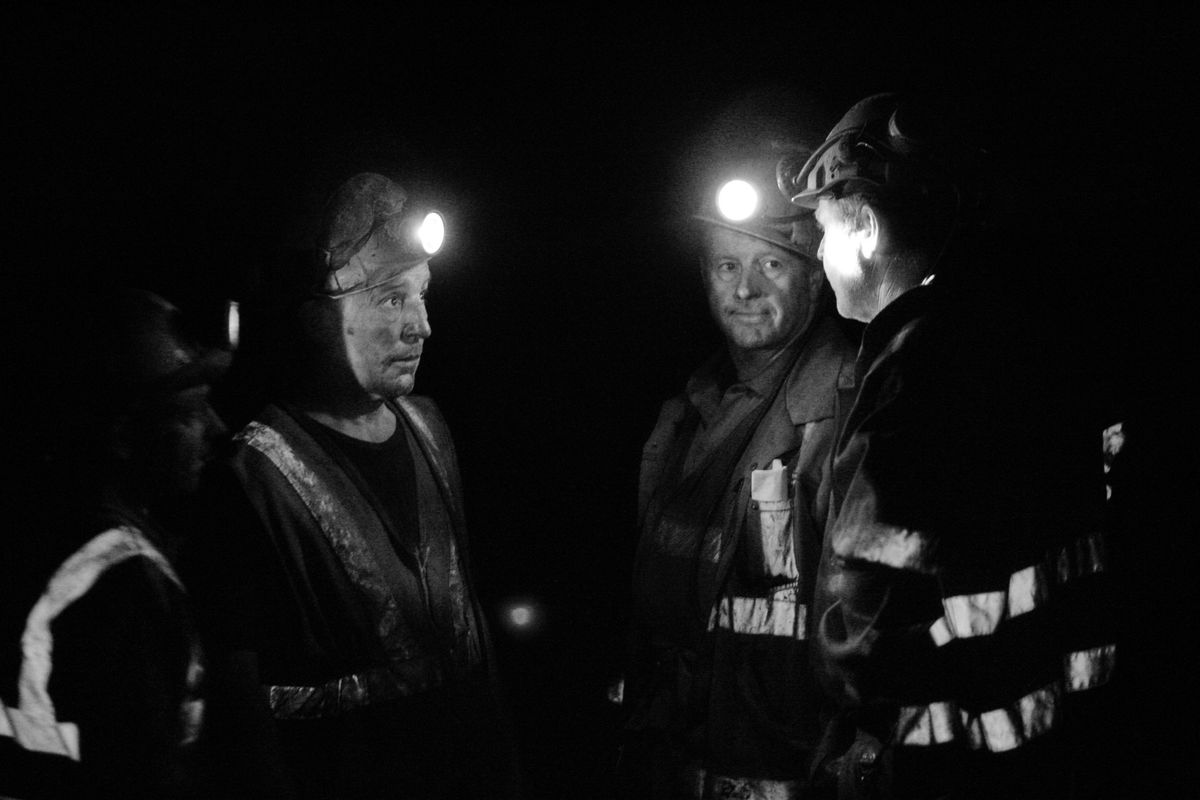Britain’s coal comeback
Changing energy goals revive an industry – and its controversies

CWMGRACH, Wales – Deep under a pine-covered mountain, men clamber into red overalls and heavy boots, strap on lamps and attach sensors that check gas levels.
They walk with bent knees into the gloom, down a rocky, uneven slope to the coal face 1,200 feet below the surface, and chatter happily about their good luck to be underground – again.
Not 10 years ago, mining was a doomed calling, and the Unity mine was just another jagged scar slashed into a South Wales hillside, a mine that was abandoned as coal prices fell. But that picture looks different now that oil is close to $100 a barrel. Coal is making a comeback in Britain, bringing jobs – and misgivings – that seemed gone for good.
“I couldn’t believe it when I heard there were jobs down the pit again,” said Gary Williams, an 18-year-old apprentice at the Unity mine. “My dad was a miner. His old man was a miner, everyone we knew was a miner, but he told me not to think of going down the mines. He said it would never happen.”
Most British output is sold to the 18 coal-fired power stations that generate a third of the country’s electricity, but rising oil prices and demand from India and China have helped to triple the price of coal from $28.80 a ton in 1999 to $86.60 last year, according to the BP Statistical Review of World Energy.
Coal’s comeback angers some Welsh residents and environmentalists who say their landscape and quality of life are being sacrificed for cash and that turning to coal will hasten global warming.
The British government says it is following the European Union’s “clean coal” policy, which encourages energy companies to develop technologies for nonpolluting power stations.
But coal remains the dirtiest form of energy: Coal-fired power stations still emit as much carbon dioxide as gas-fired ones, as well as sulfur dioxide that falls back to the earth as acid rain.
Like Scotland and northern England, this New Jersey-sized piece of the United Kingdom has a long, turbulent history with coal. Britain’s Industrial Revolution drew energy and backbone from under its undulating hills – iron ore, coal, limestone and water – all the things needed for iron production. In the 18th century, industrialists came to the valley to dig mines, build factories and smelt iron.
The industry has long been associated with backbreaking labor and devastating health problems, immortalized by Richard Llewellyn’s novel “How Green Was My Valley,” whose film version won the 1941 Oscar. Cardiff, Wales’ main port city, once led the world in coal exports.
In a 1966 disaster that shocked the world, an avalanche of coal sludge buried a school in the village of Aberfan, killing 116 children and 28 adults.
By then British coal was already in decline, from a peak of 300 million tons in 1913 to around 16 million tons a year today. The Depression, the decline of Britain’s manufacturing base, and the discovery of North Sea oil and gas off the coast of Scotland, fatally weakened coal mining.
In the 1980s, Britain’s Conservative government under Margaret Thatcher closed down most mines after an epic yearlong battle with the left-led miners’ union that became a defining feature of her capitalist ideology. In 1984, the year of the strike, there were 196,000 miners working in Britain; by 2006, there were 5,600.
But Europe’s energy goals are changing. It is growing nervous about being so dependent on Russian energy. Nuclear power remains a hard sell, and many of Britain’s 10 nuclear power stations are nearing the end of their natural life.
Enter coal – cheap, plentiful and easily stored. Europe holds a third of the world’s reserves, and to many, coal-fired power stations seem a good idea again. Britain plans to open seven new coal-fired electricity plants. One application has been formally submitted, and if successful, will lead to Britain’s first new coal-fired power station in 24 years.
A few miles from Aberfan, on the edge of the town of Merthyr Tydfilis, is the open-pit Ffos-y-Fran site. The mining company Miller Argent won the right to dig here last year after a long legal fight.
The local community is torn. South Wales has some of the highest unemployment rates in the country.
Rossville Jones, a 60-year-old lifelong miner, is happy to have a job close to home.
“Aye, there’s a bit of dust from the mines, but there’s also a job right on my doorstep,” he said, steering a dump truck filled with coal to a sorting station. “Complaining about the mines when there’s nothing else here? That’s just daft.”
But Terry Evans wishes other kinds of jobs were being created.
“The mine has stopped other people investing in this area,” he said. “Who’d want to open a hotel or a golf course, or even a company headquarters, when this mine is here?”